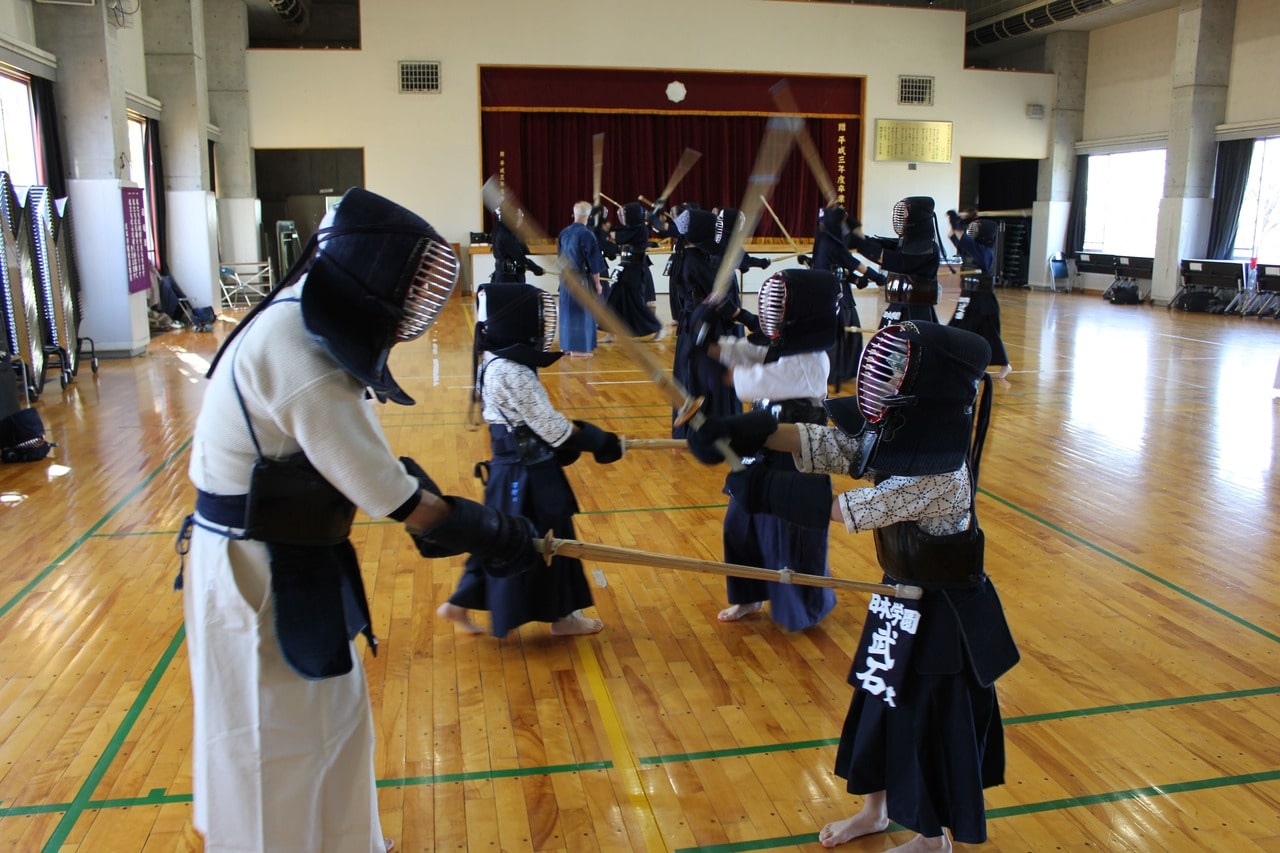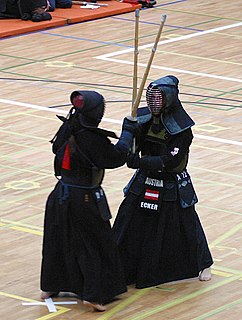
Kendo is one of Japan’s traditional martial arts and is respected and practiced all over the world.
In this article, we will focus on the techniques of kendo and provide a detailed list of techniques, from basic techniques to advanced techniques, to make it easy for everyone from beginners to experienced players to understand.
We will cover a wide range of topics, including how to properly perform each technique, effective practice methods, and how to safely use the techniques.
While touching on the spirituality and history of Kendo, the book guides readers through not only the techniques but also the philosophy of Kendo.
目次
The world of Kendo and its techniques
Kendo is a Japanese martial art that dates back hundreds of years.
This section explains the rich history of Kendo, its spiritual background, and the importance and role of each technique in Kendo.
A brief introduction to the history and spiritual background of Kendo
The history of Kendo has its roots in ancient swordsmanship and evolved from the combat training of samurai in Japan during the Sengoku period.
In the Meiji period, Kendo became formalized as a modern sport, and its spiritual aspects began to be emphasized more.
The spiritual foundation of Kendo is strongly influenced by the ethical code known as Bushido, symbolized by the teaching that “begins with courtesy and ends with courtesy.”
This teaching shows that Kendo is not just a physical battle, but a path that enhances personal spirituality and values courtesy and respect.
The importance of techniques and their role in Kendo
Kendo techniques are more than just a means of defeating your opponent.
Each technique has a specific form, through which the swordsman learns concentration, precision, and self-control.
The basic techniques of kendo include “men”, “kote”, “dou”, and “tsuki”, and these are used by the swordsman to accurately measure the distance between himself and his opponent and to execute techniques at the right time. It serves as a training exercise.
Furthermore, these techniques teach the swordsman the balance between defense and attack, encouraging technical mastery as well as spiritual growth.
Kendo techniques play a central role in a swordsman’s development, as they require both formal beauty and mental concentration in their execution.
This makes Kendo not just a sport, but also a philosophical practice aimed at self-improvement in all aspects of life.

Explanation of basic techniques of Kendo
In Kendo, accurate technique and proper form are directly linked to success or failure in the competition.
Here, we will explain in detail the technical details of the basic techniques of kendo: “men”, “kote”, “do”, and “tsuki”, as well as the correct form and execution method for each.
Technical details of major striking techniques
-
Men :
- Men is a technique that targets the opponent’s head, and in order to perform it accurately, it is necessary to swing down so that the tip of the shinai hits the opponent’s part of the face correctly. When hitting men, look directly at the opponent’s face and strike forcefully with your torso straight.
-
Kote :
- For small moves, aim at the opponent’s wrist. When performing this technique, while dodging the opponent’s shinai, rotate the handle of your shinai inward and strike the kote at an acute angle. It is a skill that requires precision and timing.
-
Torso :
- The torso is a technique that aims at the side of the opponent’s abdomen. When striking, sweep the opponent’s Shinai upward or push it downward to clear the strike against the opponent’s torso. The key is to use the rotation of your body to make a big swing.
-
Tsuki :
- Tsuki is a technique in which the opponent is stabbed directly in the throat with a bamboo sword, and is a very dangerous technique. A correct thrust is performed by lightly touching the tip of the shinai to the opponent’s throat. A high level of skill and self-control is required, as failure to control it can cause injury.
Correct form and execution method of each technique
In order to perform each Kendo technique safely and effectively, please note the following:
-
Maintaining basic posture :
- It is important to start the technique from the correct basic position and return to the same position when finished. This ensures balance and accurate technique.
-
Breathing and force distribution :
- When performing techniques, it is important to regulate your breathing and properly distribute your force. Be sure not to apply too much force and make sure that the force is firmly transmitted to the impact point.
-
Mental concentration :
- The key to success is to increase your concentration on each technique and accurately grasp the distance and timing from your opponent.
By mastering these basic techniques, you will improve your overall Kendo technique and be able to try more advanced techniques.
Careful practice in a safe environment is the foundation for enjoying Kendo and continuing to do it for a lifetime.
By constantly honing the correct form and technique, you will be able to get closer to the essence of Kendo.

Applied techniques and combinations

How to practice techniques at practice
Effective practice is essential to improving Kendo techniques.
Here we detail the structure of common drills and practice sessions in Kendo training, effective practice techniques, and common mistakes and how to correct them.
Typical drills and practice session structure for skill practice
-
Basic hitting practice :
- Kendo practice begins with basic strikes. This includes repeatedly practicing the basic strikes of men, kote, do, and tsuke. Through basic strikes, you will learn accurate striking positions, how to apply appropriate force, and correct posture.
-
Movement method practice (footwork) :
- Correct footwork is essential for effective striking. Practice a variety of foot movements, including forward, backward, and rotation, and master the appropriate movement for each skill.
-
Kumite formal practice :
- Formal practice is a set of attack and defense patterns, and involves performing a series of movements with a partner. This will help you develop timing and distance between attacks and defenses.
Effective practice techniques and correction of frequent mistakes
-
Importance of repeated practice :
- Repetitive practice is essential for improving technique. Executing the same technique accurately over and over again builds muscle memory and improves reaction speed.
-
Utilize video feedback :
- By recording a video of your practice and watching it later, you can objectively evaluate your technique and mistakes in movement. This will clarify specific areas for improvement.
-
Frequent mistakes and their corrections :
- Typical mistakes include using too much force, misplacement, and incorrect posture. These problems should be corrected through appropriate feedback from instructors and a change in self-awareness.
By understanding how to practice kendo and effectively honing your techniques, you will improve not only your technique as a kendo practitioner, but also your spirituality.
Practicing Kendo goes beyond simply building physical strength; it promotes harmony between mind and body, and the lessons learned can be applied in daily life.

The role of armor and the safety of techniques
In Kendo, armor plays a very important role. The use of proper protective equipment allows for accurate execution of techniques and greatly improves the safety of practice and competition.
This section explains how armor affects the execution of techniques and how to use it correctly to increase the safety of techniques.
How armor affects the execution of techniques
-
Protection function :
- Kendo armor mainly protects the head, wrists, abdomen, and throat. These areas are vulnerable to attack, so the right armor protects these critical areas and minimizes the risk of injury.
-
Improved performance :
- Appropriate protective gear allows athletes to perform their tricks with confidence. When athletes can trust the protection of their armor, they are more willing to perform techniques and perform better during practice.
-
Technique precision :
- Armor also plays an important role in performing techniques. Particularly when hitting “face”, if the armor doesn’t fit properly, it can obstruct your vision and restrict your movement.
Correct way to use armor to increase the safety of techniques
-
Proper fitting :
- When purchasing armor, choose one that fits your body precisely. It is especially important to adjust the mask and body armor so that they are neither too tight nor too loose.
-
Regular maintenance :
- Armor should be maintained regularly and checked for damage. If it is torn or frayed, we will repair or replace it.
-
Learning the correct way to put on and take off :
- Learning and practicing how to properly put on and take off your armor will ensure that it stays in place. Improper putting on and taking off can cause the protective equipment to become misaligned, reducing its protective function.
Protective gear is essential to safely enjoy Kendo.
By following these guidelines and using protective gear correctly, you will not only improve your Kendo techniques, but you will also be able to practice safely and effectively.

Application of techniques in Kendo matches
In Kendo matches, applied techniques are used tactically based on basic techniques.
In a match, it is important not only to perform techniques, but also to land effective strikes against the opponent.
Here, we will explain the techniques and tactics often used in matches, as well as the standards for how referees evaluate techniques.
Techniques and tactics often used in matches
-
Kotegaeshi :
- By using a feint with a small hand and a quick attack on the face, you can provoke a reaction from your opponent and create an opening for your attack.
-
Double hit :
- A continuous technique that hits the face and then immediately hits the body. The first blow breaks the opponent’s stance, followed by the second blow for a decisive blow.
-
Extracted body :
- A technique that evades the opponent’s attack and uses its momentum to quickly strike into the opponent’s torso. He has a lot of movement and can be an effective source of points in games.
Standards for how referees evaluate techniques
Kendo judges use the following criteria to evaluate the effectiveness of techniques:
-
Accurate impact location :
- Does the technique hit the target part (men, torso, kote, tsuki) accurately? Inaccurate strikes will not be recognized as points.
-
spirit :
- The spirit when striking is also an important evaluation criterion. In kendo, blows that are filled with spirit are valued, so you are required to put your will into each blow rather than just performing a technique.
-
How to use your body :
- Appropriate use of the body during the technique will also be evaluated. It is necessary to be well-balanced and perform techniques with a strong posture.
-
Zanshin :
- The state of zanshin after the strike is also subject to evaluation. Zanshin refers to remaining alert and maintaining a fighting stance even after a strike, and indicates the completeness of the technique.
Taking these factors together, the judge determines the effectiveness of the technique. In Kendo matches, winners and losers are decided based on fair and accurate evaluations based on these criteria.
The key to success is for athletes to understand these standards and hone these elements along with learning their techniques.

Kendo techniques FAQ
It is common for many questions to arise when learning Kendo.
Here you will find answers to frequently asked questions about learning techniques in Kendo, as well as additional resources to improve your technique.
Frequently asked questions and answers
-
Q: What is the most basic technique in Kendo?
- A: The most basic techniques in Kendo are “men”, “kote”, “dou”, and “tsuki”. These techniques form the basis of kendo and are important techniques that all kendo practitioners should learn.
-
Q: How can I improve the accuracy of my techniques?
- A: In order to improve the precision of your techniques, it is important to start with the basics and gradually progress to advanced techniques. Additionally, it is effective to objectively evaluate your own movements through regular practice and feedback from experienced players.
-
Q: What tactical techniques are often used in competitive kendo?
- A: In competitive kendo, tactical techniques such as kote-gaeshi, nidan-uchi, and nukidou are often used. These techniques are used to take advantage of your opponent’s chances and aim for effective strikes.
-
Q: What are the key points to practice Kendo skills safely?
- A: In order to practice safely, you need to wear the correct protective gear, warm up properly, and practice with your physical condition in mind. Also, when performing techniques, it is important to keep proper form in mind and avoid using excessive force.
Additional resources to help you master the craft
-
Books :
- “Kendo Basics”: This is a teaching material that provides detailed explanations of Kendo from its basics to advanced techniques.
- “Kendo Kata Complete Guide”: A technical book specializing in Kata, each movement of Kata is explained in detail.
-
Online resources :
- Official website of All Japan Kendo Federation: The latest Kendo techniques, rules, and match videos are available.
- Kendo Channel on YouTube: Many Kendo classes and instructors show demonstrations of their techniques, so you can learn the moves in action.
By using these questions and answers and resources, you can effectively learn and master Kendo techniques.
Please enjoy the way of Kendo while always being safe.

summary
Through this article, we have provided a detailed guide to Kendo techniques from basic to advanced, and how to safely practice and use them in real combat.
Kendo is not just an athletic competition, but a profound martial art that combines spirituality and technique.
The correct execution of each technique described here, and the accompanying tactical application, are the keys to success in Kendo competitions.
- By starting with basic techniques and progressing to applied techniques , you will deepen your precision and understanding of the techniques.
- Wearing appropriate protective gear and correct practice methods are essential for safe practice .
- Understanding the criteria used by referees will lead to improved performance in matches.
- It is important to always prioritize safety and strive to learn and practice correct techniques.
Ultimately, Kendo is not only a way to improve one’s technique, but also one’s inner self.
Through continuous practice and learning, you will be able to deeply understand the spirit of Kendo and apply its teachings to your daily life.
Please continue your journey of self-growth while enjoying the path of Kendo.






